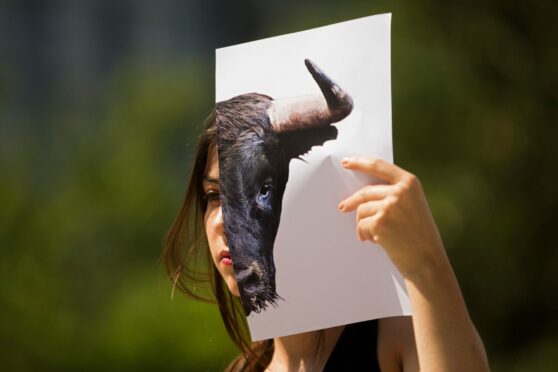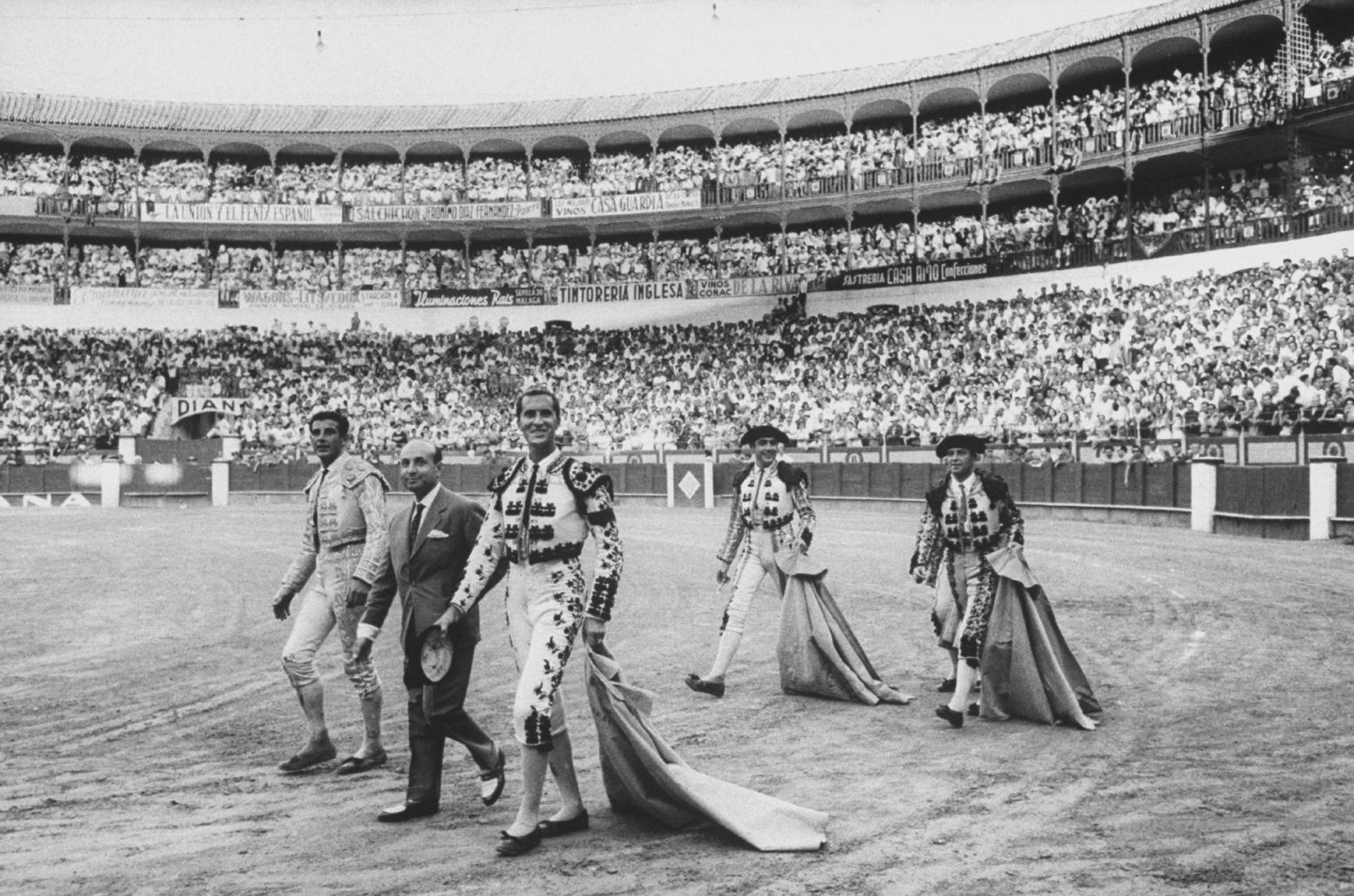
The bull is dragged out by a gang of men into a ring before a cheering crowd, then tied to a wooden trellis.
As the furious animal struggles, men tie metal rods with inflammable bags to its horns then set them alight. The bull is finally cut free.
It flails around the ring, charging the crowd who hide behind cages. Most dodge out of the way in time. Only the unlucky few will be skewered on the bulls’ blazing horns.
Welcome to the world of the toros embolados (flaming bulls), a practice which provokes huge opposition in Spain, even among admirers of bullfighting.
In the wake of the pandemic which closed bull rings and banned village bull festivals, Spain’s most controversial cultural export faces a fresh fight for survival in 2022.
An alliance of animal rights groups, left-wing parties and younger Spaniards want to administer the estocada – the death blow – to what they see as an ugly stain on this modern nation.
Even supporters of what Spaniards call “la fiesta nacional” (the national festival) say matadors, promoters and breeders of fighting bulls are deeply divided over the future.
This centuries-old practice is at the centre of an increasingly bitter clash between the old and the new Spain. To an increasing number of Spaniards, torturing an animal in the name of “culture” or “art” should be consigned to the past.
However, the men in the gold suits and spandex pink stockings are not content to see their world disappear so fast. Matadors and conservative and far-right political parties have fought back at attempts to cut grants for something they regard as an intrinsic part of Spanish culture.
In Spain’s increasingly polarised political landscape, where five main parties fight for a slice of power, bullfighting has become a potent symbol in this culture war.
In 2013, the then-conservative government declared bullfighting part of the national heritage which should be protected throughout Spain, effectively blocking any attempts to ban the practice.
Nevertheless, at a local level, the battle of the bulls continues apace.
Ventas del Batán is home to one of the Spanish capital’s four bullfighting schools.
Armed with the pink and yellow capote (cape), boys from the age of nine to 24 battle it out against other youths pushing shopping trolleys with horns attached, masquerading as the real thing.
When they are ready, they will face heffers at rings in the countryside to decide if they have what it takes to become a matador.
This ring is also a symbol of the battle between left and right over bullfighting.
Manuela Carmena, the communist former judge who was mayor of Madrid until 2019, cut public funds for bullfighting schools as part of a campaign to remove state support for this bloody sport.
When political fortunes changed in the capital and the conservative People’s Party wrestled control of Madrid two years ago, they restored €500,000 annual funding.
José Pedro Prados “El Fundi”, who was a matador for 25 years, is the teacher at the bullighting school.
“Of course the left and the right are fighting over the bulls. The animal rights movement has been on the rise in recent years and with some left-wing parties they have tried to cut funding,” he said.
“But matadors, bull breeders and the People’s Party have fought back. We will not let part of Spanish culture die.”
He refutes claims that younger Spaniards are losing interest in the bulls, distracted by the myriad choices of modern life and sickened by the cruelty.
“I see a younger and younger audience at bullfights. I think for some people, they are bored with how bland life can be with just computers to amuse them. Bullfighting is dangerous and real and, whether they like it or not, it is something striking,” he said.
In October, Spain’s left-wing government announced a €400 “cultural bonus” for young people to stimulate the arts, cinema and theatre in the wake of the pandemic but excluded bullfighting.
Victorino Martín, president of the Bullbreeders Foundation, announced it was taking legal action against the government, adding “bullfighting is one of the hardest-hit cultural activities by the pandemic and yet the government is trying to carry out social engineering to lead young people in their cultural choices”.
The organisation said the majority of people who went to see bullfights were aged 18 to 24, while the industry generated €4.1 billion every year and created 54,000 jobs. However, bullfighting has been on the decline for years.
After the 2008 financial crisis, Spain was plunged into a five-year recession forcing deep cuts in public spending among local authorities which did away with the bullfights which are normally the centre-piece of summer festivals.
The number of bullfighting events declined from 3,651 in 2007 to 793 in 2019, according to government figures.
Polls have shown Spaniards are increasingly against the tradition which dates back to before the 17th Century.
A poll for Electomania in October found 44.1% of Spaniards would ban bullfighting, while 34.7% were in favour of keeping it and 21.2% did not support it but did not want to ban it.
Aïda Gascon Bosch, of AnimaNaturalis, an animal rights organisation, is hopeful that the tide of opinion is changing in Spain against what she calls killing bulls for entertainment.
“Fewer and fewer younger people go to bullights. It is more a thing for older men. Apart from that we believe that the pandemic might have helped put an end to this practice because numbers fell dramatically,” she said.
However, she concedes that ending village festivals like the toros embolados may be harder to push through.
“In small villages, there is not much else to do for young people so they become involved,” she said.
One of the most unlikely critics of the world of “lost toros” is Antonio Lorca, bullfighting critic of El País, Spain’s biggest selling newspaper.
He said that since bullfighting was decimated by the Covid-19 pandemic, with rings closed for months, the industry has had no real plan about how to recover.
“There is division between matadors, promoters and breeders inside of a route plan on how to recover,” he said.
“At the same time, bullfighters are no longer admired by young people any more. Society does not respect them.”
However, when asked if the contest between man and bull is unfair and cruel, Lorca turns as fast as a matador flipping his cape at a charging 500kg animal.
“Would you go out there and do battle with a bull? Anyone who has the guts to do that is no coward.”

Enjoy the convenience of having The Sunday Post delivered as a digital ePaper straight to your smartphone, tablet or computer.
Subscribe for only £5.49 a month and enjoy all the benefits of the printed paper as a digital replica.
Subscribe © James Burke/The LIFE Picture Col
© James Burke/The LIFE Picture Col